The long cycle of falling interest rates in Asia could be over after the US Federal Reserve’s third rate increase in 15 months was followed quickly by monetary tightening in the world’s second-biggest economy, China.
The Fed’s widely anticipated rise of 25 basis points on Wednesday was also only its third since the global financial crisis, having reined in earlier temptations to raise rates out of concern for the effect on fragile emerging economies that still needed looser monetary conditions.
However, the Fed again signaled that such reticence is over, repeating its projections for at least two more rate increases this year as the US economy improves.
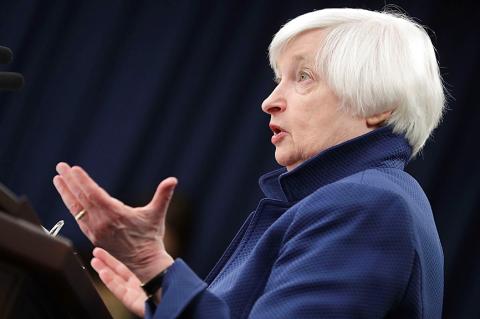
Photo: AFP
“At the very least, the Fed’s desire to step up the pace of policy normalization has changed the conversation at many central banks globally,” said Sean Callow, an economist with Westpac in Sydney.
“Further monetary easing is now largely seen as only if needed to ‘break the glass,’ not a plausible baseline,” Callow said.
The People’s Bank of China yesterday raised the rates on the short-term funding operations it conducts for the nation’s banks for a third time this year.
The Fed’s move would otherwise make it harder for China to stop its currency weakening and arrest a persistent outflow of capital. China also wants to cool a run-up in debt and the risk of a property bubble.
The Bank of Japan’s regular policy meeting yesterday opted to stand pat with its 0.1 percent short-term interest rate target and a loose commitment to keep buying bonds, though core inflation is far below its ambitious 2 percent target.
The Fed’s new policy path is a sea change for global markets used to a decade of easy money.
While emerging markets are showing some signs of strength, with a recovery in commodity prices and growth in exports, they are struggling to fire up domestic demand.
However, their freedom to fit domestic rates to local demand conditions is constrained by the need to keep hold of the foreign capital that flooded in seeking higher yields when developed world rates were at rock bottom.
They also need to prevent their currencies from tumbling against a rallying US dollar.
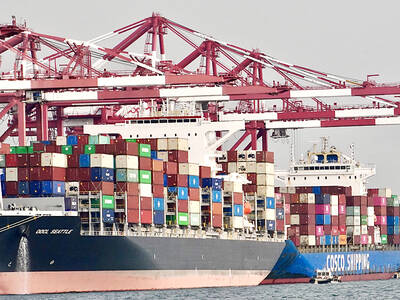
Taiwan’s exports soared to an all-time high of US$61.8 billion last month, surging 49.7 percent from a year earlier, as the global frenzy for artificial intelligence (AI) applications and new consumer electronics powered shipments of high-tech goods, the Ministry of Finance said yesterday. It was the first time exports had exceeded the US$60 billion mark, fueled by the global boom in AI development that has significantly boosted Taiwanese companies across the international supply chain, Department of Statistics Director-General Beatrice Tsai (蔡美娜) told a media briefing. “There is a consensus among major AI players that the upcycle is still in its early stage,”
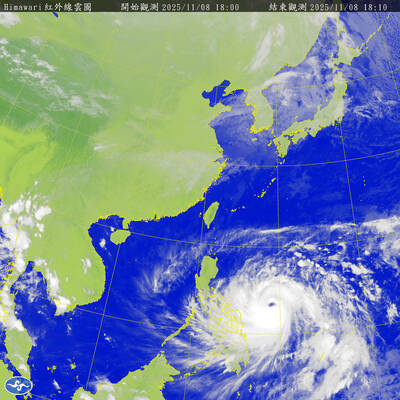
The Central Weather Administration (CWA) yesterday said it expected to issue a sea warning for Typhoon Fung-Wong tomorrow, which it said would possibly make landfall near central Taiwan. As of 2am yesterday, Fung-Wong was about 1,760km southeast of Oluanpi (鵝鑾鼻), Taiwan’s southernmost point, moving west-northwest at 26kph. It is forecast to reach Luzon in the northern Philippines by tomorrow, the CWA said. After entering the South China Sea, Typhoon Fung-Wong is likely to turn northward toward Taiwan, CWA forecaster Chang Chun-yao (張峻堯) said, adding that it would likely make landfall near central Taiwan. The CWA expects to issue a land
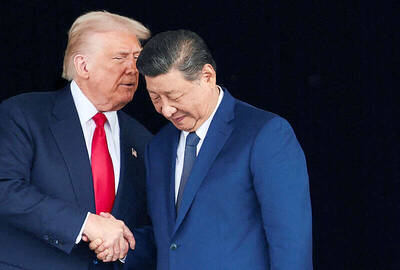
‘SECRETS’: While saying China would not attack during his presidency, Donald Trump declined to say how Washington would respond if Beijing were to take military action US President Donald Trump said that China would not take military action against Taiwan while he is president, as the Chinese leaders “know the consequences.” Trump made the statement during an interview on CBS’ 60 Minutes program that aired on Sunday, a few days after his meeting with Chinese President Xi Jinping (習近平) in South Korea. “He [Xi] has openly said, and his people have openly said at meetings, ‘we would never do anything while President Trump is president,’ because they know the consequences,” Trump said in the interview. However, he repeatedly declined to say exactly how Washington would respond in
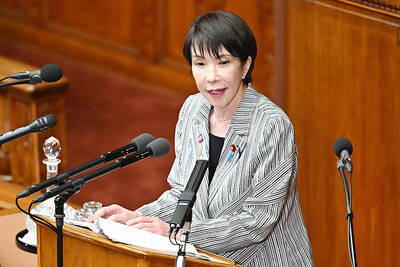
Japanese Prime Minister Sanae Takaichi said yesterday that China using armed force against Taiwan could constitute a "survival-threatening situation" for Japan, allowing the country to mobilize the Japanese armed forces under its security laws. Takaichi made the remarks during a parliamentary session yesterday while responding to a question about whether a "Taiwan contingency" involving a Chinese naval blockade would qualify as a "survival-threatening situation" for Japan, according to a report by Japan’s Asahi Shimbun. "If warships are used and other armed actions are involved, I believe this could constitute a survival- threatening